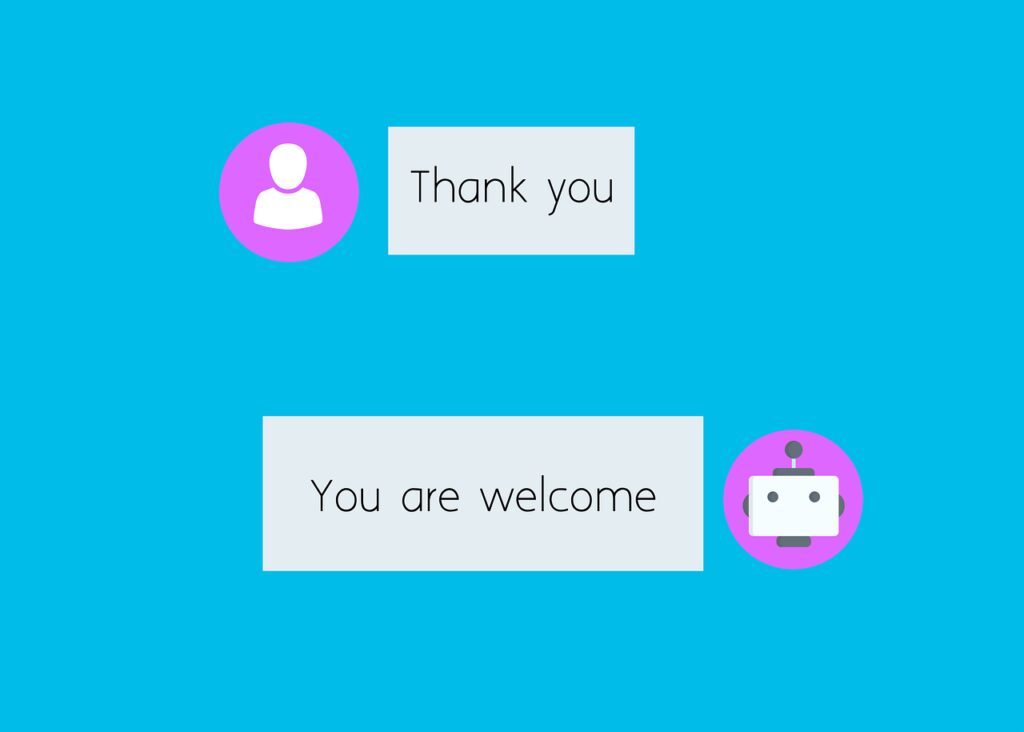Chatbots work using a mix of set rules, artificial intelligence (AI), and natural language processing (NLP). Rule-based chatbots follow fixed patterns, while AI-powered ones use smart computer programs to understand what users mean and give better answers. They have an NLP engine to understand questions, a backend server to process information, and a user interface for chatting. Chatbots learn from user feedback to get better over time. If you want to learn more about how chatbots work and what they can do, you will find it interesting.
Types of Chatbots
There are different types of chatbots, each using various technologies and serving different purposes. These include rule-based, AI-powered, hybrid models, and decision tree-guided chatbots.
Rule-based chatbots follow set scripts and rules. They give responses based on specific words or user inputs. They are great for easy tasks and common questions where the conversation is predictable.
AI chatbots use artificial intelligence and natural language processing (NLP) to understand what users mean. These chatbots can have more complex and smart conversations compared to rule-based chatbots. By using NLP, AI chatbots can understand language, context, and intent, giving more accurate and helpful answers.
Hybrid chatbots mix rule-based and AI methods. They use set rules for simple questions and AI for more complicated interactions. This way, the chatbot can handle a wide range of questions well.
Decision tree-guided chatbots lead users through a series of choices based on their selections. This makes the user experience smoother by providing clear and structured options.
Natural Language Processing
Understanding how AI chatbots work involves learning about Natural Language Processing (NLP). NLP is the technology that helps these chatbots understand and reply to human language. NLP includes tasks like breaking down sentences (tokenization), understanding grammar (parsing), figuring out what the user wants (intent recognition), finding important information (entity gathering), and knowing how the user feels (sentiment analysis). These tasks help chatbots understand what people are saying.
NLP uses smart computer programs to look at and learn from lots of text. This helps chatbots get better at understanding language over time. The programs help chatbots understand small differences in how people talk, making conversations more natural and engaging. Knowing what the user wants (intent recognition) is very important because it helps chatbots give accurate answers. Understanding how the user feels (sentiment analysis) lets chatbots respond in a way that matches the user’s mood.
Combining NLP with smart computer programs turns simple chatbots into smart ones that can learn and adapt. This makes the chatbots better at giving helpful, thoughtful, and emotionally aware answers, which makes talking to them a better experience for users.
Machine Learning Algorithms
Machine learning algorithms help chatbots learn from lots of user interactions. This helps them spot patterns and improve their answers over time. This skill is important for the chatbot to understand and respond correctly to different questions. Chatbots use natural language processing (NLP) and algorithms like Naïve Bayes for sorting things into groups, Recurrent Neural Networks (RNNs) to understand sequences, and support vector machines to recognize what the user wants.
In machine learning, supervised learning is very important. It means training the chatbot with labeled data, like example conversations, to teach it how to predict what the user wants. This helps the chatbot give reliable answers by learning from examples.
On the other hand, unsupervised learning lets chatbots find patterns and group similar questions without labeled data. This helps the chatbot handle new questions and unexpected user interactions. Real-time feedback helps the chatbot keep learning and getting better, improving how well it responds and how happy users are with it.
Chatbot Architecture
A well-built chatbot has three main parts: an NLP engine, a backend server, and an interface layer. These parts help the chatbot talk smoothly across different messaging apps. Chatbots can be rule-based, retrieval-based, generative, or hybrid. Each type uses different ways to answer questions.
The NLP engine is very important. It helps the chatbot understand what users are saying and figure out what they want. This makes sure the chatbot can answer questions correctly.
The backend server is like the brain of the chatbot. It processes requests, handles data, and talks to other databases to give good answers. It also runs the main tasks needed for the chatbot to work.
The User Interface (UI) is where users interact with the chatbot. A simple and clear UI makes it easy for users to ask questions and get answers. Machine learning models help the chatbot get better over time by learning from user interactions. This means the chatbot keeps improving and adapting to what users need.
Continuous Learning
Continuous learning helps chatbots get better at understanding and answering questions by looking at user interactions and feedback. This process uses machine learning, which means the chatbot learns from the conversations it has with users. Over time, this helps chatbots improve.
| Aspect | Description | Impact |
|---|---|---|
| Machine Learning | Uses algorithms to learn from data | Makes responses more accurate and adaptable |
| Natural Language Understanding | Understands and processes what users say | Helps understand different phrases and words |
| User Interactions | Real-time chats that provide data | Helps find patterns and improve responses |
| Feedback Loop | Cycle of human checks and chatbot updates | Ensures quality and learning on its own |
The feedback loop is very important. At first, humans help check the chatbot’s answers to make sure they’re good. Then, as the chatbot talks to more users, it starts to learn on its own. This helps it get better at recognizing patterns, understanding new phrases, and improving its accuracy. Over time, the chatbot needs less help from humans and can solve problems more effectively. This ongoing learning is key to keeping chatbots performing well and making users happy.
Practical Applications
Using advanced language technology and machine learning, chatbots have become important tools in many industries, making things run smoother and improving customer experiences. In customer service, chatbots use natural language processing to answer questions right away, reducing wait times and making customers happier. More than half of consumers prefer companies that offer chat communication, showing how useful AI is in this area.
In online shopping, chatbots look at user data and browsing history to suggest products, making shopping easier and increasing sales. In healthcare, chatbots help by scheduling appointments and answering patient questions quickly, which makes operations more efficient and patients more satisfied.
Banks use chatbots to answer questions about account balances, transaction histories, and loan applications, making customer interactions easier and cutting down on costs. Similarly, in the hospitality industry, chatbots help with booking services and give real-time support for customer questions, improving booking rates and customer engagement.
These practical uses of chatbots, powered by advanced AI and natural language technology, show their growing importance in improving service delivery and efficiency across different industries.
Conclusion
In conclusion, chatbots use natural language processing (NLP) and machine learning to help users quickly and accurately. Studies show that businesses using chatbots have become 30% more efficient. Chatbots have three main parts: an NLP engine, a question-and-answer system, and a backend server. These parts work together to make sure chatbots can handle lots of tasks. As chatbots interact with users, they learn and get better over time. This makes chatbots important tools for improving how we communicate online.
Not Sure How AI Can Help Your Business? Let’s Talk!

Ugnė Daniūnaitė
Business Development Manager
Book a no-obligation free consultation with our expert.



